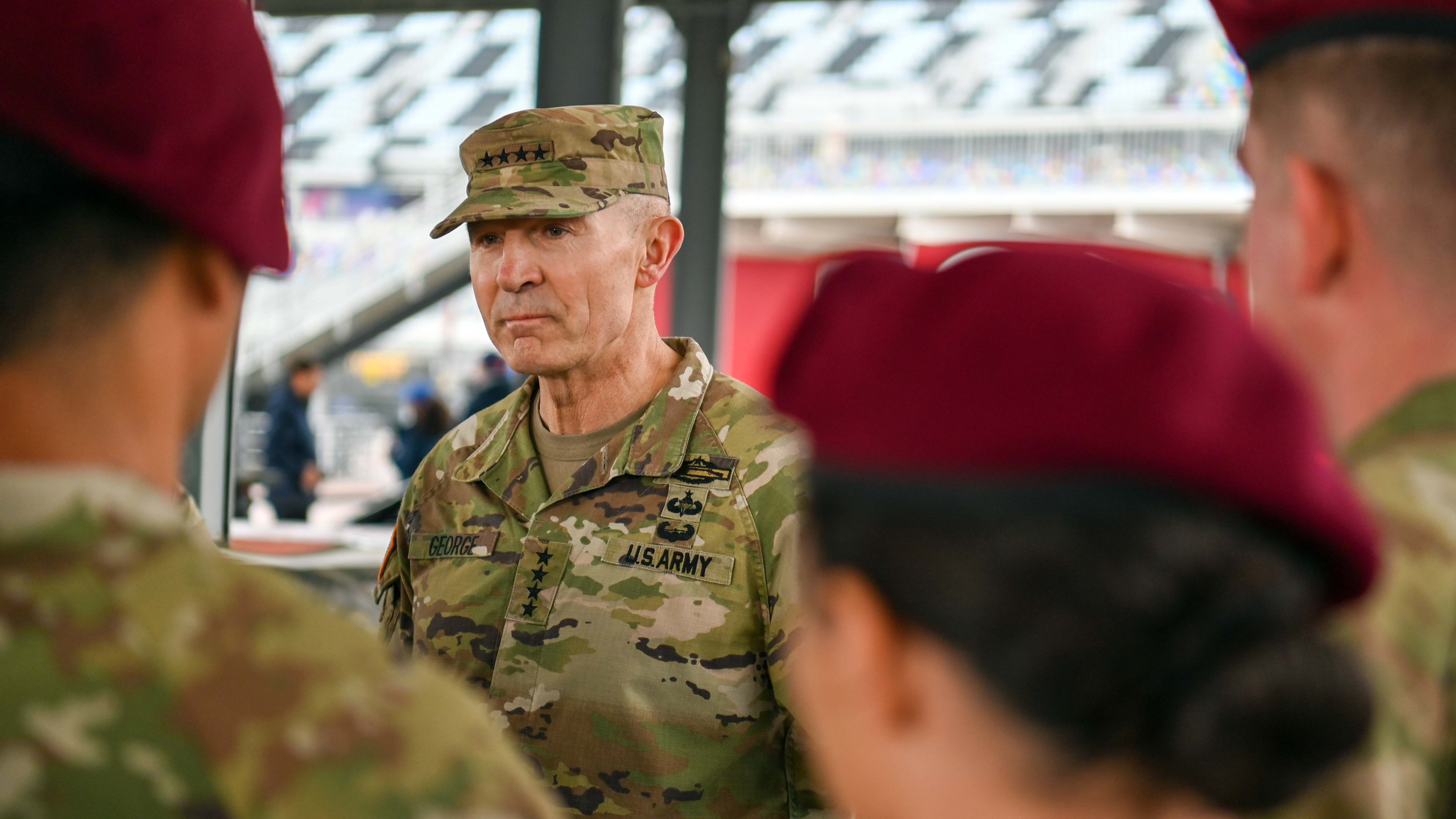George: Army Has ‘No Time to Waste’
George: Army Has ‘No Time to Waste’

The Army must move with urgency as it faces an increasingly “volatile” world and rapidly evolving technology, Army Chief of Staff Gen. Randy George said.
On today’s battlefield, “there is no place to hide,” George said during remarks March 7 at the McAleese Defense Programs Conference in Washington, D.C. “Everything and everyone can be seen, whether by a satellite, a phone or the Internet of Things, and what can be seen can be killed.”
Commercial technology is moving faster than military technology, George said, and it has military applications. “In fact, employing simple, cheap tech faster is giving people a tactical edge,” he said.
Additionally, “people are gravitating toward urban centers, and so is conflict,” he said, and “the battlefield isn’t local like it used to be. Our enemies can reach around the globe and through space and cyberspace.”
Faced with these challenges, the Army must be able to help the joint force deter war everywhere and “be ready to fight anywhere against very capable adversaries,” George said. “We’ve got to be able to seize and hold ground for the joint team,” he said. “War always comes down to a close fight on the streets. We cannot expect to win without making contact on land.”
Simultaneously, Army must be able to “reach across the battlefield with long-range precision fires,” he said. “Land-based fires are lethal and accurate, and proving increasingly difficult for the enemy to target.” It also must be able to get “beans, bullets and fuel to forward formations even when there are roadblocks everywhere,” George said.
In recent years, the Army has made progress in its transformation efforts, delivering critical capabilities to the force, George said. “We will keep up the momentum on these with a sense of urgency,” he said.
The Army also must continue refining how it’s organized, how it operates and how it’s equipped, George said. This includes finding ways to cut excess structure and equipment. “Our formations have to be agile, mobile and lethal,” he said. “Our leaders should have what they need to fight, not be encumbered by things they don’t.”
The Army also is “right sizing” its structure, George said. “Top of the list is to fix recruiting, because we need more soldiers,” he said.
It also is looking at units that were “built for the war on terror, not large-scale combat,” George said. “That means cutting in certain areas but also growing in others,” he said, including air defense, long-range fires and counter-unmanned aerial systems. “Every unit in the Army, I see in the future, is going to be augmented by unmanned systems, air and ground, and every unit is going to have to master the electronic warfare fight,” he said.
The Army’s network will become more crucial to the future fight. Leaders must have access to “good, accurate information at the right time and on the right easy-to-use device,” George said.
The sprawling operations centers with satellite dishes, server stacks and high digital signatures must go, he said. “Today, that setup will get us killed,” George said. Units must use small, intuitive commercial devices, move quickly around the battlefield and blend in with the area’s normal digital noise, he said.
“We have to change some things about our Army, and we don’t have time to waste,” George said. “We can’t plan to transform once in a generation. … We must transform continuously and iteratively, and we must get better every day.”

